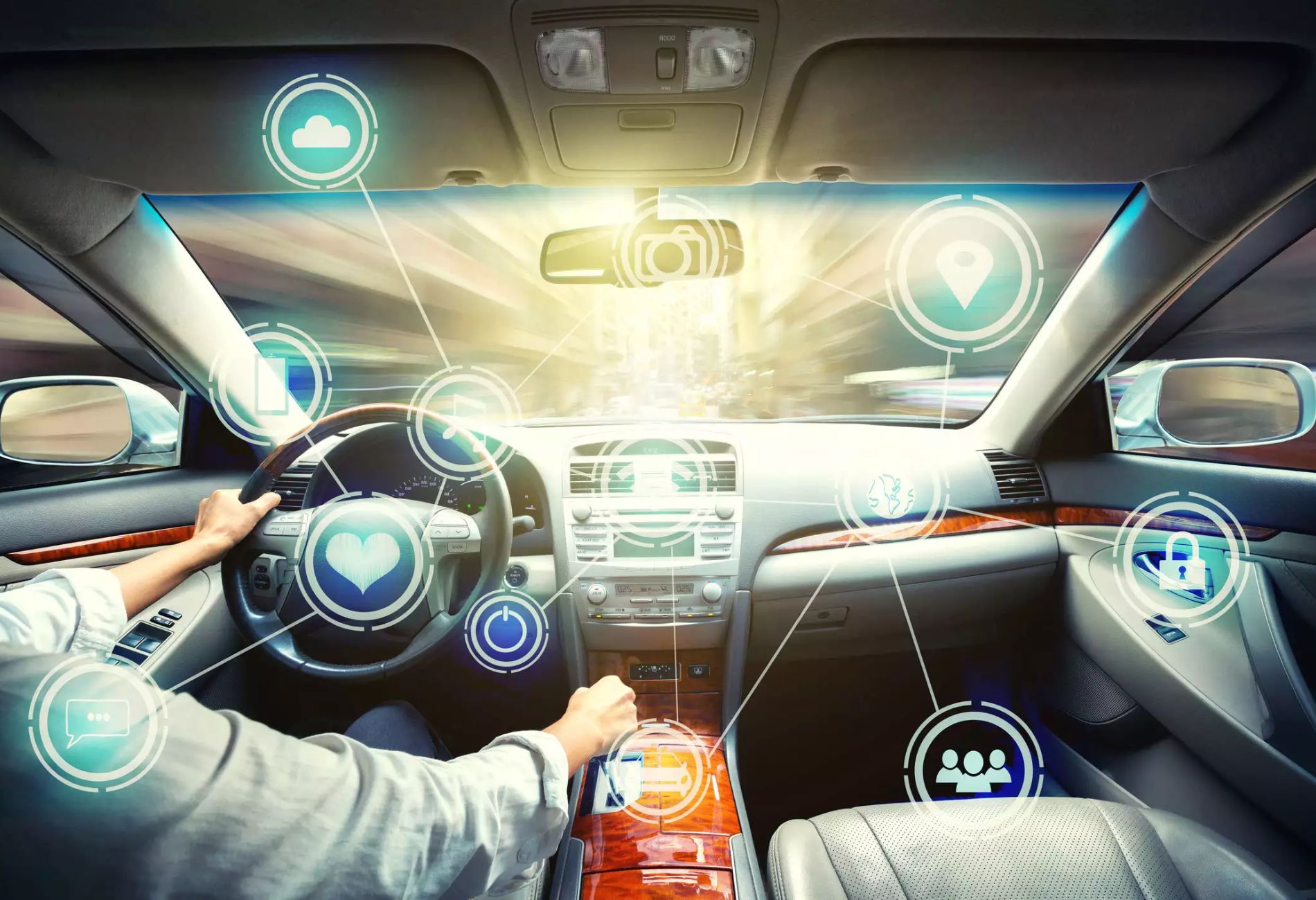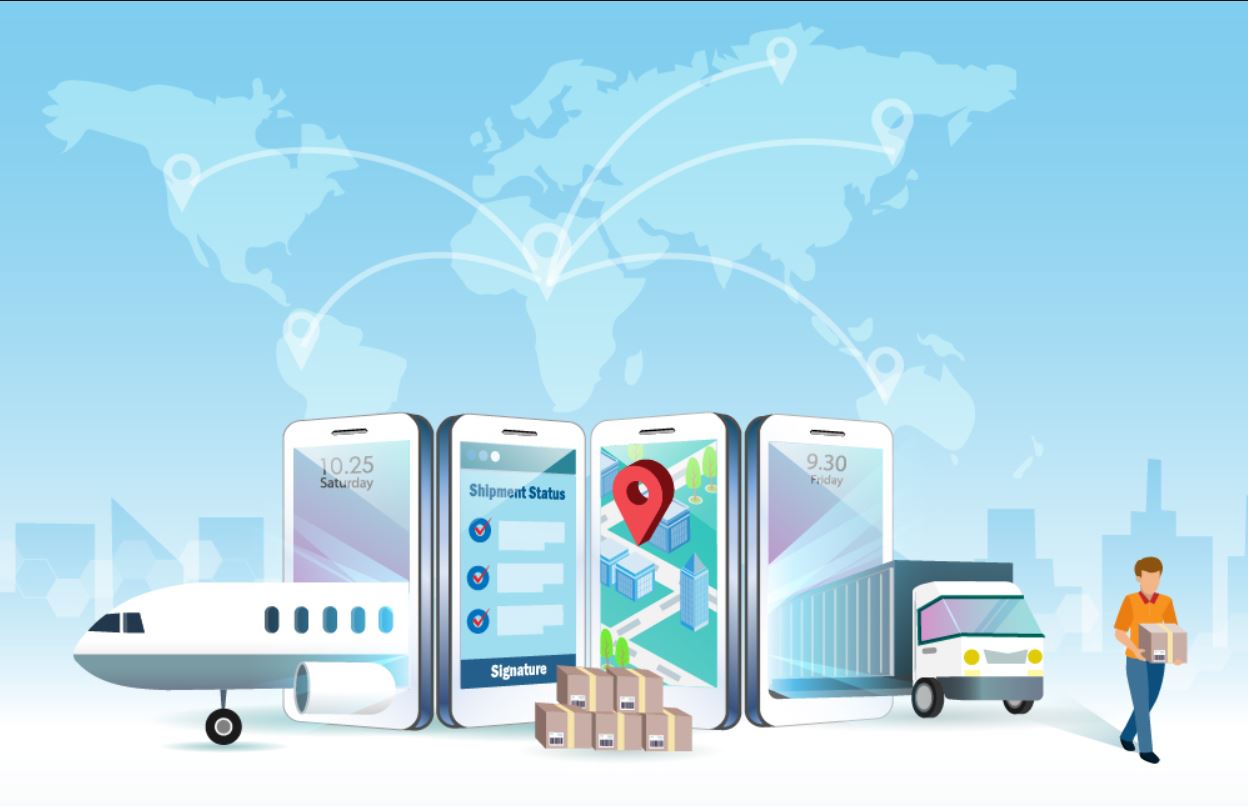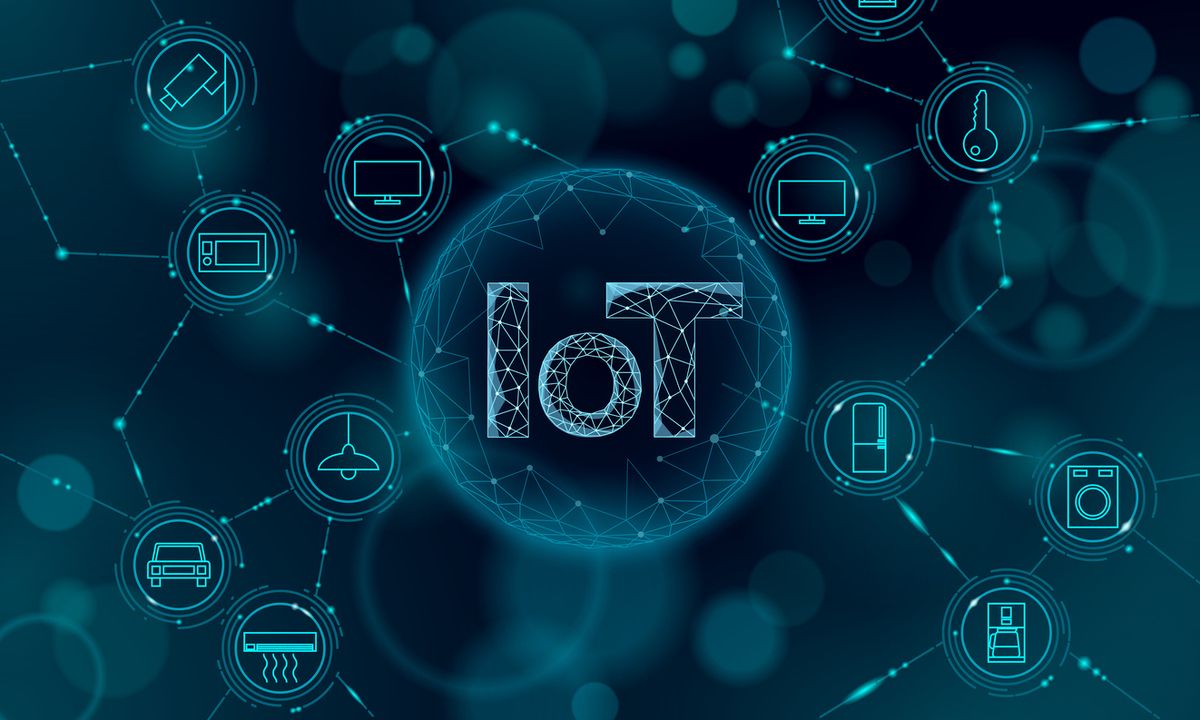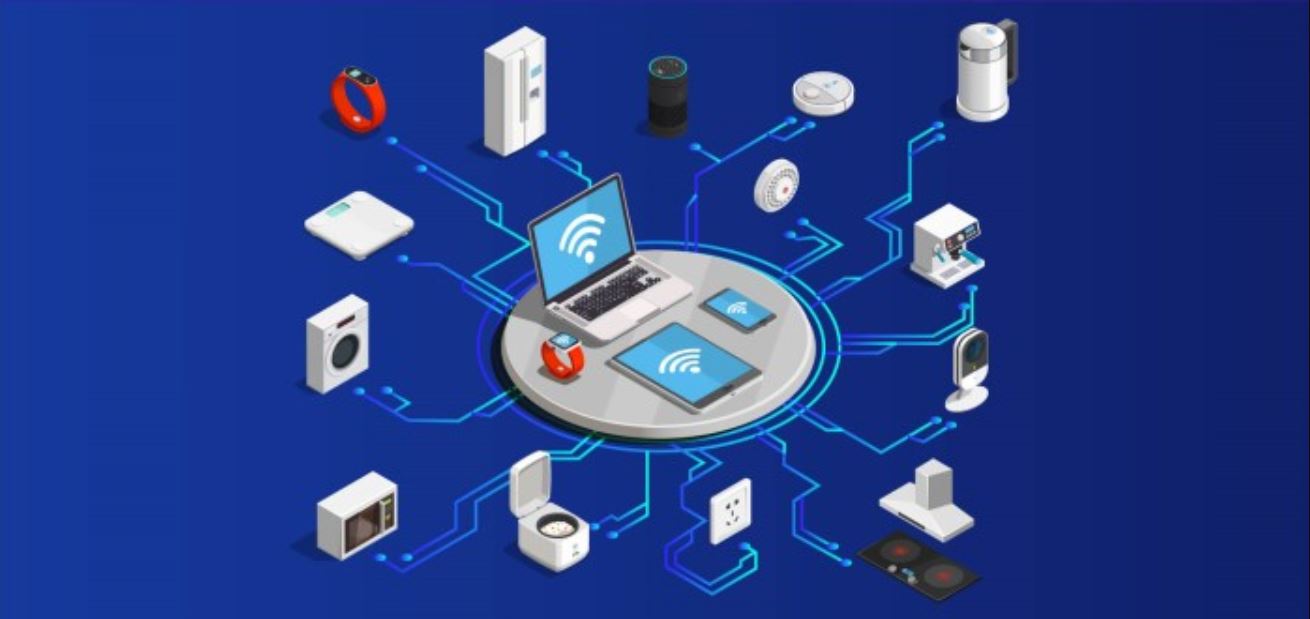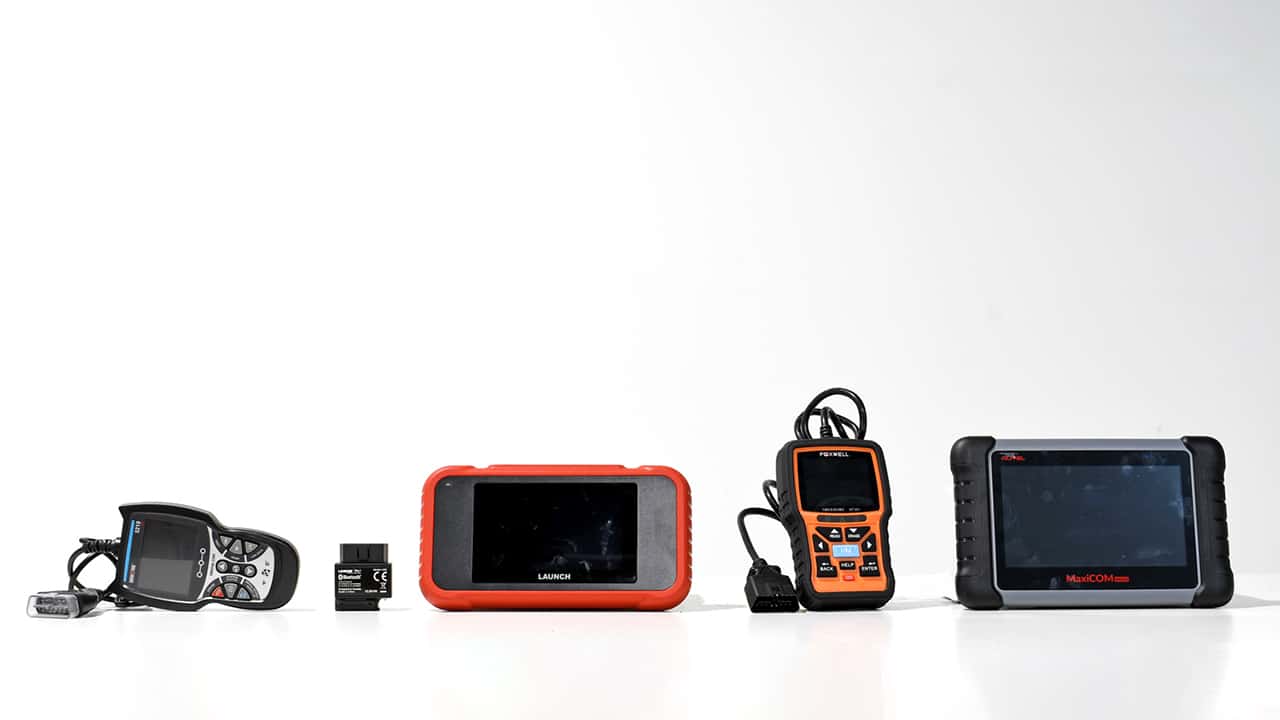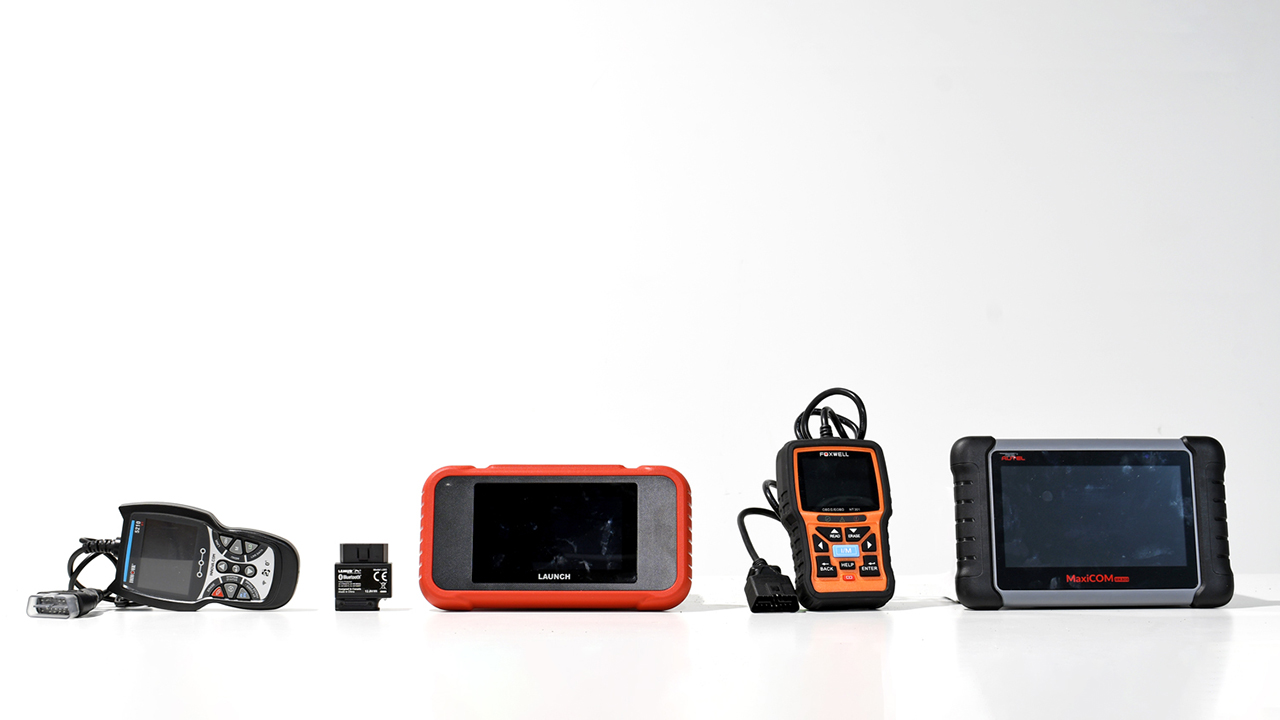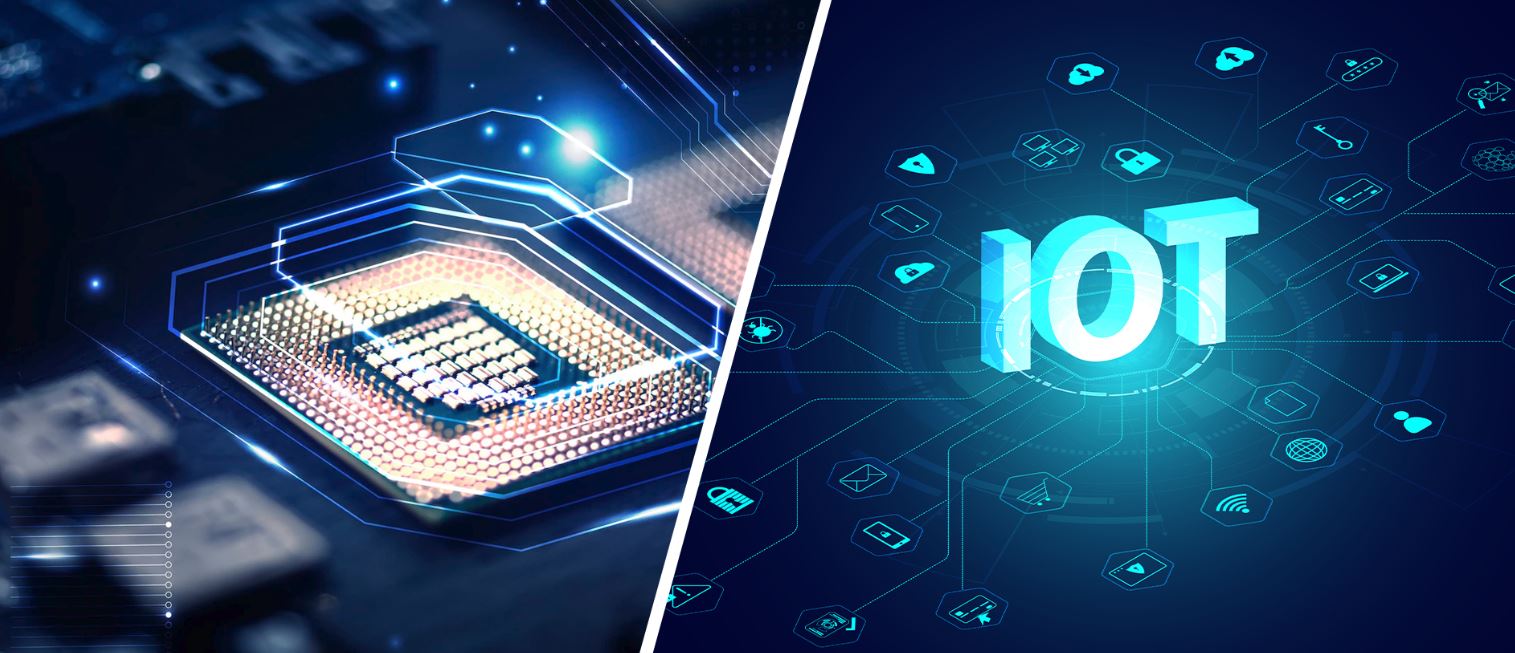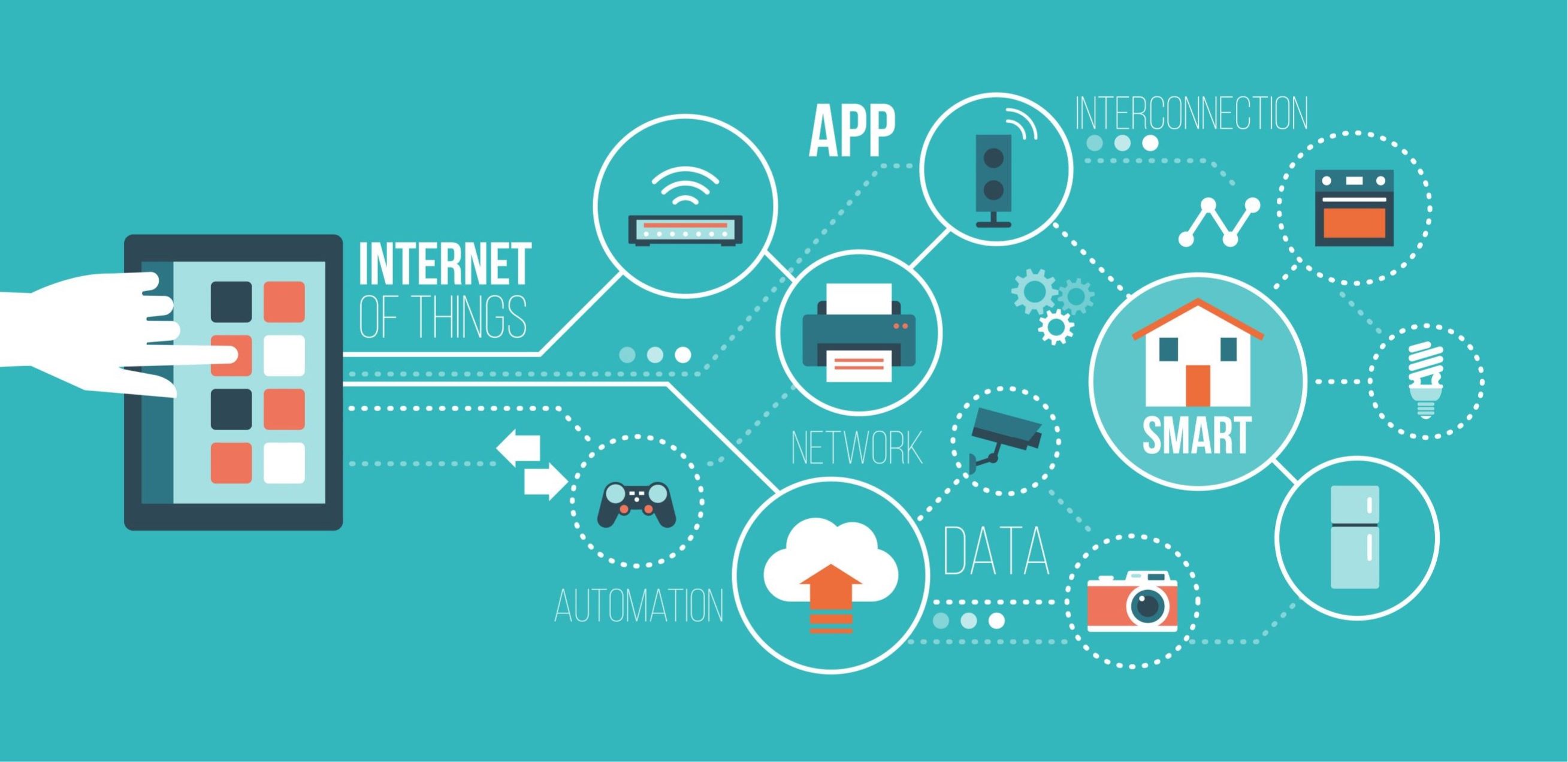Introduction
Connected vehicles are a revolutionary technology that has emerged as one of the leading applications of the Internet of Things (IoT) in the automotive industry. These vehicles are equipped with advanced communication systems and sensors that enable them to collect, analyze, and share real-time data with other vehicles, infrastructure, and the cloud.
With the rapid advancements in technology, connected vehicles are transforming the way we drive and interact with transportation systems. From enhancing road safety to improving fuel efficiency, these vehicles hold immense potential to revolutionize our daily commutes and transportation networks.
Connected vehicles leverage the power of IoT to create an interconnected ecosystem where vehicles can seamlessly communicate with one another and their surrounding environment. By leveraging wireless connectivity, these vehicles can exchange information in real-time, enabling drivers to make more informed decisions and enhancing the overall driving experience.
These vehicles are not only capable of receiving and transmitting data but also have the ability to process and analyze the information they collect. This enables them to adapt to changing road conditions, optimize fuel consumption, and improve route planning.
In this article, we will explore the concept of connected vehicles in IoT, how they work, their benefits, applications, challenges, security concerns, and the future implications of this technology in the automotive industry.
Definition of Connected Vehicles in IoT
Connected vehicles, also known as smart vehicles or intelligent vehicles, can be defined as automobiles that are equipped with advanced communication technologies and sensors to connect with other vehicles, infrastructure, and the internet. These vehicles leverage the power of the Internet of Things (IoT) to communicate, exchange data, and make intelligent decisions to enhance the driving experience, improve safety, and optimize transportation systems.
The key feature of connected vehicles is their ability to collect, process, and share real-time data with other vehicles and the surrounding environment. This data includes information about the vehicle’s position, speed, acceleration, braking, fuel consumption, and various other parameters.
By leveraging wireless communication technologies such as 4G/5G networks, dedicated short-range communications (DSRC), and vehicle-to-vehicle (V2V) communication, connected vehicles can establish reliable and fast connections with other vehicles, traffic infrastructure, and cloud-based platforms.
Connected vehicles are equipped with a range of sensors, including radars, cameras, LiDAR (Light Detection and Ranging), and ultrasonic sensors, to collect data about the vehicle’s surroundings. This data is then processed by onboard computers and transmitted to other vehicles or infrastructure to provide valuable insights and improve the overall driving experience.
Furthermore, connected vehicles can also communicate with smart road infrastructure, such as traffic signals, toll plazas, and parking systems. This enables the vehicles to receive real-time information about road conditions, traffic congestion, and available parking spaces, allowing drivers to make more informed decisions and optimize their routes.
Overall, connected vehicles in the IoT ecosystem are transforming the automotive industry by creating a more connected, intelligent, and efficient transportation network. With their ability to gather and share real-time data, these vehicles have the potential to revolutionize road safety, reduce congestion, and pave the way for autonomous driving in the future.
How do Connected Vehicles Work?
Connected vehicles rely on a combination of advanced hardware, software, and communication technologies to enable seamless connectivity and data exchange. Here’s a breakdown of how these vehicles work:
- Sensors and Data Collection: Connected vehicles are equipped with a variety of sensors, including cameras, radars, LiDAR, and ultrasonic sensors. These sensors collect data about the vehicle’s surroundings, such as road conditions, obstacles, and other vehicles.
- Data Processing and Analysis: The collected data is processed and analyzed by onboard computers and electronic control units (ECUs). These computers use algorithms and machine learning techniques to make sense of the data and extract valuable insights.
- Wireless Communication: Connected vehicles utilize wireless communication technologies, such as cellular networks, DSRC, and V2V communication, to establish robust and reliable connections with other vehicles and infrastructure. This allows for real-time data exchange and collaboration between vehicles on the road.
- Cloud Connectivity: Connected vehicles can also connect to cloud-based platforms, where they can store and retrieve data. Cloud connectivity enables vehicles to access up-to-date maps, traffic information, and software updates. It also allows for remote diagnostics, performance monitoring, and over-the-air software updates.
- Intelligent Decision-making: With the help of onboard computers and connectivity, connected vehicles can make intelligent decisions in real-time. For example, they can identify potential collision risks, optimize fuel efficiency, and adapt to changing traffic conditions. These decisions are based on the analysis of sensor data, communication with other vehicles or infrastructure, and integration with various intelligent systems.
By combining these capabilities, connected vehicles can enhance road safety, improve traffic flow, and provide a host of other benefits. Drivers can receive real-time alerts and warnings, access navigation assistance, and enjoy a more comfortable and efficient driving experience. Additionally, the data collected by connected vehicles can be leveraged to optimize transportation systems, reduce traffic congestion, and pave the way for the future of autonomous driving.
Benefits of Connected Vehicles
Connected vehicles offer a wide range of benefits that have the potential to revolutionize the way we drive and interact with transportation systems. Here are some significant advantages:
- Improved Road Safety: One of the primary benefits of connected vehicles is improved road safety. These vehicles can communicate with each other and exchange critical information, such as location, speed, and trajectory. This enables them to detect potential collision risks and issue real-time warnings to drivers, helping to prevent accidents and save lives.
- Enhanced Traffic Efficiency: Connected vehicles can gather real-time data about traffic conditions and communicate with traffic management systems. This allows them to access accurate information about congestion, accidents, and road closures, enabling drivers to choose the most efficient routes. By reducing traffic congestion and optimizing traffic flow, connected vehicles can improve overall transportation efficiency.
- Optimized Fuel Efficiency: With the ability to collect and process data about driving patterns, road conditions, and traffic, connected vehicles can optimize fuel efficiency. They can suggest eco-friendly driving techniques to optimize acceleration, deceleration, and route planning, leading to reduced fuel consumption and lower emissions.
- Enhanced Driver Assistance: Connected vehicles provide advanced driver assistance features that improve the driving experience. These include features like lane departure warning, blind-spot detection, adaptive cruise control, and automatic emergency braking. By leveraging sensor data and real-time communication, connected vehicles can help drivers avoid accidents and drive more safely.
- Improved Vehicle Maintenance: Connected vehicles can monitor various aspects of vehicle performance, including tire pressure, engine health, and battery status. Data on these parameters is collected and transmitted to the cloud, allowing for proactive maintenance and early detection of potential issues. This can help prevent breakdowns, reduce repair costs, and ensure optimal vehicle performance.
- Enhanced Infotainment and Connectivity: Connected vehicles provide a seamless integration of infotainment services with smartphones, tablets, and other connected devices. Drivers and passengers can access real-time traffic updates, music streaming, hands-free calling, and navigation services. Furthermore, connectivity allows for over-the-air software updates and the integration of third-party applications.
Overall, connected vehicles have the potential to transform the transportation landscape by improving road safety, reducing traffic congestion, optimizing fuel efficiency, and enhancing the overall driving experience. As this technology continues to advance, we can expect even more benefits to emerge, paving the way for a safer, more efficient, and connected future on the roads.
Applications of Connected Vehicles
Connected vehicles have the potential to revolutionize various aspects of transportation and enable a wide range of applications that can enhance the driving experience and improve overall transportation systems. Here are some notable applications of connected vehicles:
- Advanced Driver Assistance Systems (ADAS): Connected vehicles can leverage their sensor data and real-time communication capabilities to provide advanced driver assistance systems. These systems include features such as lane departure warning, adaptive cruise control, and automatic emergency braking, which help drivers navigate safely and reduce the risk of accidents.
- Traffic Management and Optimization: Connected vehicles enable traffic management systems to gather real-time data on traffic conditions, congestion levels, and road incidents. This data can be used to optimize traffic signal timings, adjust lane configurations, and provide accurate traffic information to drivers to improve overall traffic flow and reduce congestion.
- Collision Avoidance: By exchanging data on position, speed, and trajectory, connected vehicles can detect potential collision risks and issue warnings to drivers. This helps to prevent accidents and improve road safety by enabling vehicles to proactively avoid dangerous situations.
- Smart Parking: Connected vehicles can communicate with parking systems to provide real-time parking information. This allows drivers to locate available parking spaces and reserve them in advance, reducing the time spent searching for parking and alleviating congestion in busy areas.
- Vehicle-to-Vehicle (V2V) Communication: Connected vehicles can communicate with each other to exchange information, such as speed, direction, and location. This enables cooperative driving and the sharing of real-time road conditions, enhancing overall safety and traffic efficiency.
- Emergency Services: In the event of an accident or emergency, connected vehicles can transmit data to emergency services, providing crucial information such as vehicle location, impact severity, and the number of occupants. This enables faster response times and more effective emergency services.
These applications are just some of the many possibilities that connected vehicles bring to the table. As the technology continues to evolve, we can expect to see even more innovative applications and use cases that will transform the way we drive and interact with transportation systems.
Challenges in Implementing Connected Vehicles
While connected vehicles hold immense promise for the future of transportation, there are several challenges that must be addressed for their successful implementation. These challenges include:
- Infrastructure Requirements: Implementing connected vehicles requires the development of a robust and reliable infrastructure. This includes building and maintaining a widespread network of communication towers, improving internet connectivity, and integrating smart road infrastructure, such as traffic signals and toll plazas.
- Data Security and Privacy: Connected vehicles generate and transmit vast amounts of data, including personal information and location data. Ensuring the security and privacy of this data is crucial to prevent unauthorized access, hacking, and misuse. Strong encryption, authentication protocols, and privacy regulations need to be implemented to protect user data.
- Interoperability: Establishing interoperability among connected vehicles from different manufacturers and ensuring seamless communication is a significant challenge. Standardization of communication protocols, data formats, and connectivity technologies is essential to enable effective collaboration and data sharing between vehicles and infrastructure.
- Costs and Affordability: Equipping vehicles with the necessary sensors and communication technologies can be costly, especially for older vehicles. Ensuring the affordability of connected vehicle technology and incentivizing its adoption are critical to achieving widespread implementation.
- Reliability and Connectivity: Connected vehicles heavily rely on wireless connectivity for communication. Ensuring reliable and uninterrupted connectivity, especially in remote areas or during network congestion, is crucial to maintain the effectiveness of connected vehicle applications.
- Regulatory Challenges: The deployment of connected vehicles requires addressing regulatory challenges related to data sharing, liability, cybersecurity, and privacy. Governments and regulatory bodies need to collaborate with automotive manufacturers, technology companies, and other stakeholders to develop appropriate regulations and standards for connected vehicle implementation.
Overcoming these challenges is crucial to harnessing the full potential of connected vehicles and reaping their benefits. Collaboration between industry, government, and other stakeholders is essential in addressing these challenges and creating an ecosystem that supports the widespread adoption and implementation of connected vehicles.
Security Concerns of Connected Vehicles
While connected vehicles offer numerous benefits, they also introduce new security challenges that need to be addressed to ensure the safety and privacy of drivers and passengers. Here are some of the key security concerns associated with connected vehicles:
- Cybersecurity Risks: Connected vehicles are vulnerable to cyber-attacks, just like any other connected device. Hackers can potentially gain unauthorized access to a vehicle’s systems, compromising its safety and functionality. This includes the potential for unauthorized control of critical systems like steering, acceleration, and braking.
- Privacy Risks: Connected vehicles collect vast amounts of data, including location, driving patterns, and personal information. If this data is not properly protected, it can be exploited by malicious actors for various purposes, including identity theft, stalking, and targeted advertising.
- Software Vulnerabilities: The complex software systems in connected vehicles can contain vulnerabilities that hackers can exploit. This includes weaknesses in the vehicle’s operating system, infotainment systems, and communication protocols, which can be targeted for unauthorized access or manipulation.
- Supply Chain Risks: Connected vehicles rely on a complex ecosystem of suppliers and third-party vendors for their components and software. Security vulnerabilities introduced at any stage of the supply chain can compromise the overall security of the vehicle, potentially providing an entry point for cyber-attacks.
- Over-the-Air Update Risks: Over-the-air software updates are crucial for maintaining the security and functionality of connected vehicles. However, if not implemented securely, these updates can also introduce new risks. Malicious actors may attempt to exploit the update process to upload malicious software or gain unauthorized access to the vehicle’s systems.
- Regulatory and Legal Challenges: The rapid advancement of connected vehicle technology has outpaced the development of adequate regulations and laws to address security concerns effectively. Clear and enforceable regulations are needed to ensure that manufacturers implement appropriate security measures and are held accountable for any security breaches.
To mitigate these security concerns, several steps can be taken. This includes implementing robust encryption and authentication mechanisms, conducting thorough security testing, fostering collaboration between automakers and cybersecurity experts, and creating regulatory frameworks that prioritize security and privacy. Ongoing research, education, and awareness efforts are also critical to stay ahead of emerging security threats and vulnerabilities.
Addressing the security concerns of connected vehicles requires a multi-faceted approach involving collaboration between automakers, technology providers, government agencies, and cybersecurity experts. By prioritizing security and privacy in connected vehicle systems, we can ensure the safe and secure deployment of this transformative technology.
Future of Connected Vehicles in IoT
The future of connected vehicles in the Internet of Things (IoT) holds immense potential for transforming the automotive industry. As technology continues to evolve, connected vehicles are expected to play a crucial role in shaping the way we drive and interact with transportation systems. Here are some key areas where the future of connected vehicles looks promising:
- Autonomous Driving: Connected vehicles are paving the way for autonomous driving. By leveraging advanced sensor technologies, real-time data exchange, and artificial intelligence algorithms, connected vehicles can navigate and operate without human intervention. This promises safer, more efficient transportation and has the potential to reduce accidents caused by human error.
- Intelligent Traffic Management: With the advancements in connected vehicle technology, traffic management systems can become even more intelligent and efficient. Real-time data sharing between vehicles and infrastructure can enable dynamic rerouting, optimized traffic signal timings, and predictive traffic management to further reduce congestion and improve traffic flow.
- Eco-Friendly Transportation: Connected vehicles can contribute to a more sustainable future by optimizing fuel efficiency and reducing emissions. With intelligent routing suggestions, eco-driving coaching, and integration with smart energy grids, connected vehicles can play a significant role in promoting greener transportation and reducing the environmental impact of vehicles.
- Enhanced In-Car Experience: The future of connected vehicles includes advanced infotainment systems with seamless integration to smartphones, voice assistants, and other smart devices. Occupants will be able to access personalized content, customized settings, and on-demand services, providing an enhanced in-car experience and making travel time more productive and enjoyable.
- Data-Driven Insights: Connected vehicles generate an enormous amount of data, which can be leveraged to gain valuable insights. Analysis of this data can help optimize transportation systems, improve road safety, and enable adaptive traffic management strategies. Additionally, data-driven insights can inform city planners, policymakers, and automotive manufacturers on how to create more efficient and sustainable transportation networks.
- Integration with Smart Cities: Connected vehicles will play a key role in the integration of transportation systems with smart cities. By seamlessly communicating with smart infrastructure, such as traffic signals, parking systems, and public transportation, connected vehicles can contribute to a more efficient and sustainable urban environment.
As the technology continues to advance and the infrastructure evolves, the future of connected vehicles in IoT looks promising. However, realizing the full potential of connected vehicles will require addressing various challenges, including regulatory, security, and privacy concerns. Collaboration between industry stakeholders, government bodies, and technology providers will be crucial in realizing a connected and autonomous future on the roads.
Conclusion
Connected vehicles, powered by the Internet of Things (IoT), are revolutionizing the automotive industry and transforming the way we drive and interact with transportation systems. These vehicles leverage advanced communication technologies, sensors, and data analysis to enhance road safety, improve traffic efficiency, and provide a more enjoyable and connected driving experience.
The potential benefits of connected vehicles are vast. They include improved road safety through real-time communication and collision avoidance systems, enhanced traffic management for reduced congestion, optimized fuel efficiency for greener transportation, and advanced driver assistance systems for a safer driving experience.
However, the implementation of connected vehicles does come with challenges. These include the need for robust infrastructure, addressing security and privacy concerns, ensuring interoperability, and overcoming regulatory and cost-related hurdles. Overcoming these challenges will require collaboration between automotive manufacturers, technology providers, regulatory bodies, and stakeholders to create a secure, reliable, and connected ecosystem.
The future of connected vehicles in IoT is promising. It includes advancements in autonomous driving, intelligent traffic management, eco-friendly transportation, enhanced in-car experiences, data-driven insights, and integration with smart cities. As technology evolves and infrastructure improves, connected vehicles will continue to shape the future of transportation, creating safer, more efficient, and sustainable transportation networks.
In conclusion, connected vehicles have the potential to revolutionize the way we travel and interact with transportation systems. By leveraging the power of IoT, they are transforming road safety, traffic management, and driver experiences. As the technology continues to advance and challenges are addressed, connected vehicles will play a significant role in shaping the future of transportation, paving the way for a connected, efficient, and automated driving ecosystem.







